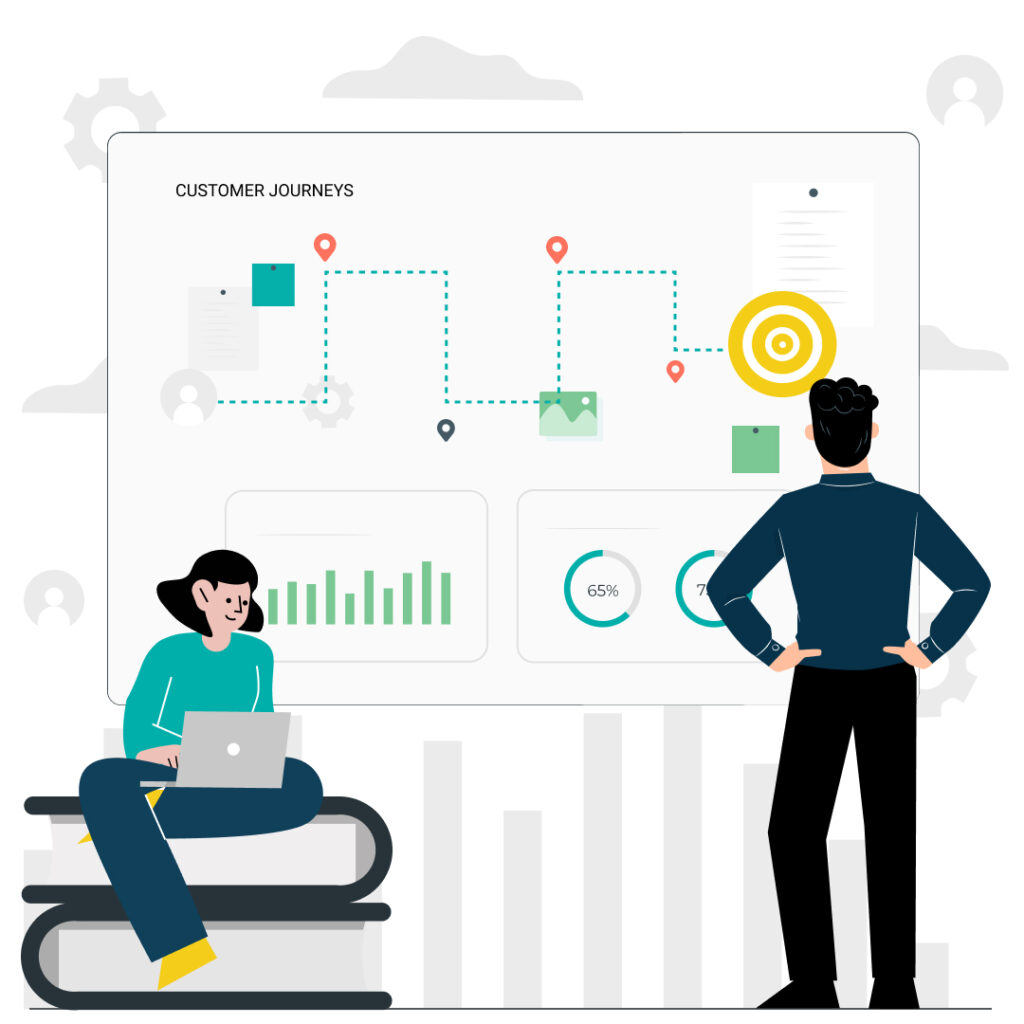You’re probably running into the same problem everyone else faces: trying to compete with AI-powered companies while dealing with resource constraints and operational chaos. The thing is, AI systems aren’t like regular applications – they need constant babysitting, and traditional DevOps practices just don’t cut it.
This guide builds on our comprehensive Building Smart Data Ecosystems for AI, where we walk through the complete framework for getting your data AI-ready. MLOps is the systematic fix that bridges your development skills with the operational demands of AI systems. It handles the complete AI lifecycle – from data coming in to models going out and everything in between.
Here’s what you get: automated data quality checks so you’re not manually inspecting everything, feedback loops that make your models better over time, and deployment pipelines that actually work without requiring a PhD in data science. That translates into AI capabilities that compete with the big players without their budget.
We’ll cover the essentials – infrastructure planning, team buy-in, and practical solutions that deliver real business results.
What is MLOps and How Does It Differ from Traditional DevOps?
MLOps takes DevOps principles and adds the weird stuff that comes with AI systems – data drift, model degradation, and the need to constantly retrain models. Traditional DevOps deploys code that behaves predictably. MLOps deals with models that get worse over time because the world changes.
Your regular DevOps pipeline pushes code and it works. MLOps has to manage data pipelines, model versioning, and performance monitoring across an AI system that’s constantly evolving.
The key differences are automated data quality checks, model validation pipelines, and feedback loops that connect what’s happening in production back to your development process. These components keep your AI systems effective as they age.
How Do You Ensure Data Quality and Integrity for AI Models?
Automated data quality monitoring is the foundation of everything. It continuously checks data accuracy, completeness, and consistency before any model training or predictions happen. These systems catch data problems immediately, preventing them from cascading through your AI pipelines. For the basics on data quality concepts, check our Smart Data Foundations and AI Ecosystem Components guide.
You need objective standards for what counts as acceptable data. Key metrics include accuracy rates above 95%, completeness levels ensuring all required fields have valid data, and consistency checks that validate relationships and business rules. When these thresholds get breached, automated alerts notify your team for immediate action.
Data validation pipelines provide systematic quality assurance through multiple checkpoints. Schema validation ensures data structures match what you expect, while statistical property checks identify weird patterns that might indicate corruption or source system problems.
Feedback loops connecting model performance to data quality issues let you identify and fix problems quickly. When model accuracy drops below acceptable levels, automated systems analyse recent data inputs to find potential quality problems.
Data versioning strategies track dataset changes over time, so you can roll back when problematic data updates cause model performance issues. This supports reproducible model training and lets your team quickly revert to known-good data states when things go wrong.
What Infrastructure Requirements Exist for Implementing MLOps?
Cloud-first infrastructure reduces complexity while giving you enterprise-grade AI capabilities. Managed services from major cloud providers handle the underlying infrastructure management, so your team focuses on AI application development rather than system administration. These infrastructure decisions connect directly to the architectural frameworks in our complete Building Smart Data Ecosystems for AI resource.
GPU resources can be cost-effective through cloud auto-scaling and spot instances for training workloads. Modern cloud platforms offer GPU instances that automatically scale based on demand, so you only pay for compute resources you actually use.
Container technology enables consistent model deployment across development, testing, and production environments. Containerised models ensure identical runtime environments regardless of underlying infrastructure, eliminating deployment inconsistencies that commonly cause production issues.
Specialised databases support modern AI applications, particularly those using large language models or semantic search capabilities. These databases handle high-dimensional vector data efficiently, enabling similarity searches that traditional relational databases can’t support effectively.
Infrastructure as Code practices ensure reproducible, scalable deployments using tools like Terraform or CloudFormation. This approach reduces manual configuration errors and ensures consistent environments across different deployment stages.
How Does Automated Model Performance Tracking Work in Production?
Real-time monitoring systems track model accuracy, prediction confidence, and response times to identify performance degradation immediately. These systems continuously compare current predictions against expected outcomes, measuring key performance indicators like precision, recall, and F1-scores for classification models.
Statistical monitoring compares current predictions against baseline performance metrics to detect drift in model effectiveness over time. This involves tracking distribution shifts in input features and output patterns that might indicate changing data characteristics or model degradation.
Business impact tracking connects model performance to key organisational metrics like conversion rates, customer satisfaction, and revenue generation. This connection helps teams understand the real-world implications of model performance changes and prioritise improvement efforts based on business impact.
Automated alerting systems notify relevant teams when performance falls below acceptable thresholds, enabling proactive intervention before business impact becomes significant. Alert configurations consider both technical metrics and business context, ensuring teams receive notifications about issues that actually matter.
Performance data feeds back into retraining pipelines, automatically triggering model updates when degradation reaches critical levels. Automated retraining reduces the time between performance degradation detection and resolution, minimising business impact from model drift.
How Can You Get Development Teams Engaged in Data Quality Initiatives?
Frame data quality as an extension of code quality – developers already understand the importance of clean, maintainable code. Poor data creates technical debt similar to poorly written code, leading to unreliable applications and increased maintenance overhead.
Developer-friendly tools that integrate seamlessly with existing workflows prevent data quality initiatives from disrupting development velocity. IDE plugins that highlight data quality issues, pre-commit hooks that validate data changes, and CI/CD pipeline integration all make data quality feel natural rather than burdensome.
Clear ownership models help developers understand their specific responsibilities within AI systems without creating confusion about accountability. Define which team members are responsible for data schema validation, quality metric monitoring, and issue resolution.
Visible success metrics demonstrate how data quality improvements directly impact application performance and user experience, creating motivation for continued engagement. Dashboards showing correlations between data quality scores and application reliability help developers see the tangible benefits of their quality efforts.
Training and documentation help developers understand AI system requirements and data quality best practices without requiring them to become data science experts. Hands-on workshops, mentoring systems, and knowledge sharing sessions all build organisational capability.
What’s the Build vs Buy Decision Framework for AI Operations?
Total cost of ownership evaluation must include development time, maintenance overhead, and opportunity cost of internal resources dedicated to building rather than focusing on core business functionality. Building custom solutions might seem cost-effective initially, but the ongoing maintenance requirements often exceed initial estimates significantly.
Technical capabilities and expertise within your organisation determine realistic implementation timelines and quality outcomes for custom development projects. Honestly assess your team’s experience with AI operations and the specific technologies required for effective MLOps implementation.
Integration requirements with existing systems and data sources significantly influence the build-versus-buy decision. Custom solutions can be tailored precisely to your specific integration needs, while commercial platforms might require additional development work.
Scalability needs and growth projections ensure chosen solutions can accommodate future expansion without major overhauls. Consider anticipated growth in data volumes, model complexity, and user numbers when evaluating options.
Vendor lock-in risks become important considerations when evaluating commercial platforms versus open-source alternatives. Proprietary platforms might offer superior features and support, but create dependency relationships. Open-source solutions provide more control but require greater internal expertise.
Popular build options include open-source frameworks like MLflow for experiment tracking, Apache Airflow for workflow orchestration, and Kubeflow for Kubernetes-native ML pipelines. Commercial solutions offer comprehensive platforms like Databricks, AWS SageMaker, and Google Cloud AI Platform with integrated capabilities and professional support.
How Do You Scale MLOps from Proof-of-Concept to Production?
Robust data governance frameworks ensure consistent data quality and compliance as AI systems expand from prototype to enterprise deployment. Governance policies define data access controls, quality standards, and compliance procedures that support business growth while maintaining regulatory adherence. For detailed governance strategies, see our Data Governance and Security for AI Systems guide.
Automated deployment pipelines support multiple environments and enable safe, repeatable model rollouts across development, testing, and production systems. Pipeline automation reduces manual errors while providing consistent deployment processes that teams can trust.
Comprehensive monitoring and observability systems provide visibility into AI system health across all production deployments, enabling teams to identify and resolve issues quickly. Monitoring platforms should aggregate data from all environments, providing unified dashboards that show system status and performance trends.
Organisational structures and processes that support cross-functional collaboration between development, operations, and business teams become important at scale. Clear communication channels and collaborative planning processes ensure all stakeholders remain aligned on priorities and progress. For comprehensive team management strategies, explore our Leading AI Data Transformation Teams and Organisational Change framework.
ROI measurement frameworks track business impact and justify continued investment in AI operations capabilities as systems scale. These frameworks should connect technical metrics to business outcomes, demonstrating clear value from AI investments.
Scaling phases typically progress from prototype implementations with limited data, through pilot deployments that serve real users, to full production rollouts that handle enterprise-scale traffic and data volumes. Each phase requires different capabilities and resource levels.
Team structure evolution supports increasing operational complexity through clearly defined roles and responsibilities. Initial teams might combine multiple responsibilities, but scaling typically requires specialisation in areas like data engineering, model development, and operations. This scaling approach builds upon the strategic framework presented in our smart data ecosystem guide.
FAQ Section
What’s the most cost-effective way to start with MLOps in a tech company?
Start with cloud-managed services and open-source tools to minimise initial infrastructure investment while building internal expertise through hands-on implementation. Cloud platforms like AWS SageMaker, Google Cloud AI Platform, or Azure Machine Learning provide comprehensive MLOps capabilities with pay-as-you-use pricing models that scale with your needs. Combine these with open-source tools like MLflow for experiment tracking and Apache Airflow for workflow orchestration to create a powerful, cost-effective foundation. For step-by-step implementation guidance, see our SMB Guide to AI-Ready Data Implementation.
How long does it take to see ROI from MLOps investments?
Most organisations see initial returns through reduced manual processes and improved model reliability, with full ROI typically achieved within 12-18 months. Early benefits include fewer production incidents, faster model deployment cycles, and improved data quality that enhances business decision-making. Full ROI emerges as automated systems reduce operational overhead and enable more sophisticated AI applications that drive revenue growth.
Can you automate data preparation without hiring a data science team?
Yes, using AutoML platforms and no-code/low-code solutions, existing developers can implement automated data preparation workflows with appropriate training and tooling. Modern platforms provide visual interfaces for data pipeline creation, automated feature engineering, and quality validation that don’t require deep statistical knowledge. Developer training focused on data concepts and tool usage can build sufficient capability for most business requirements. For real-time data processing implementation, see our Real-time Data Processing and Event-Driven AI Systems guide.
What are the biggest mistakes made when implementing MLOps?
Common mistakes include underestimating data quality requirements, lack of clear success metrics, insufficient team training, and trying to build everything in-house without considering proven solutions. Many focus primarily on model accuracy while neglecting operational requirements like monitoring, alerting, and automated deployment. Starting with overly complex implementations instead of building capabilities incrementally also frequently leads to project failures.
Should you hire dedicated MLOps engineers or train existing developers?
For most businesses, training existing developers is typically more cost-effective and creates better integration with existing systems, supplemented by external expertise for initial setup. Existing developers understand your business context, technical architecture, and team dynamics, making them ideal candidates for MLOps responsibilities. External consultants can provide specialised knowledge for initial implementation and training, while your team maintains long-term operational capabilities.
What happens if you don’t implement proper data quality monitoring for AI?
Without monitoring, AI models silently degrade over time, leading to poor business decisions, customer dissatisfaction, and potential regulatory compliance issues. Model performance can decline gradually due to data drift, making problems difficult to detect until significant business impact occurs. Poor data quality can cause models to make increasingly inaccurate predictions, undermining trust in AI systems and potentially causing costly business mistakes.
How do you create a data quality culture in an engineering team?
Start with education about AI system requirements, implement developer-friendly quality tools, establish clear ownership, and create visible metrics that demonstrate quality impact on system performance. Regular training sessions, quality-focused code reviews, and recognition programs for quality improvements all contribute to cultural change. Making data quality metrics visible in team dashboards and connecting them to application performance helps developers understand the importance of their quality efforts.
What’s the difference between DataOps and MLOps?
DataOps focuses on data pipeline management and quality, while MLOps encompasses the complete AI model lifecycle including training, deployment, monitoring, and retraining processes. DataOps ensures reliable, high-quality data flows that support analytics and business intelligence, while MLOps extends these concepts to include model-specific concerns like versioning, A/B testing, and automated retraining. Both disciplines work together to create comprehensive AI operations capabilities.
How much does it cost to implement MLOps in a tech company?
Initial costs range from $5,000-$20,000 monthly for cloud infrastructure and tools, with total implementation costs typically 15-25% of overall AI development budget. Costs vary significantly based on data volumes, model complexity, and chosen platforms, but cloud services provide predictable pricing that scales with usage. Planning for both immediate implementation costs and ongoing operational expenses ensures realistic budgeting for MLOps initiatives.
What should you look for when choosing between different AI data platforms?
Evaluate integration capabilities, scalability, total cost of ownership, vendor support quality, and alignment with your existing technology stack and team expertise. Consider how well platforms integrate with your current data sources, development tools, and deployment infrastructure. Assess vendor roadmaps to ensure chosen platforms will continue evolving to meet future requirements, and evaluate support quality through trials and reference customer discussions.
How do you measure the business impact of MLOps initiatives?
Track metrics like deployment frequency, model performance consistency, incident response time, development velocity, and direct business outcomes from AI applications. Technical metrics should include model accuracy trends, deployment success rates, and system uptime, while business metrics connect AI performance to revenue, customer satisfaction, operational efficiency, and other organisational objectives. Regular reporting that combines technical and business metrics demonstrates AI system value to stakeholders across the organisation.












